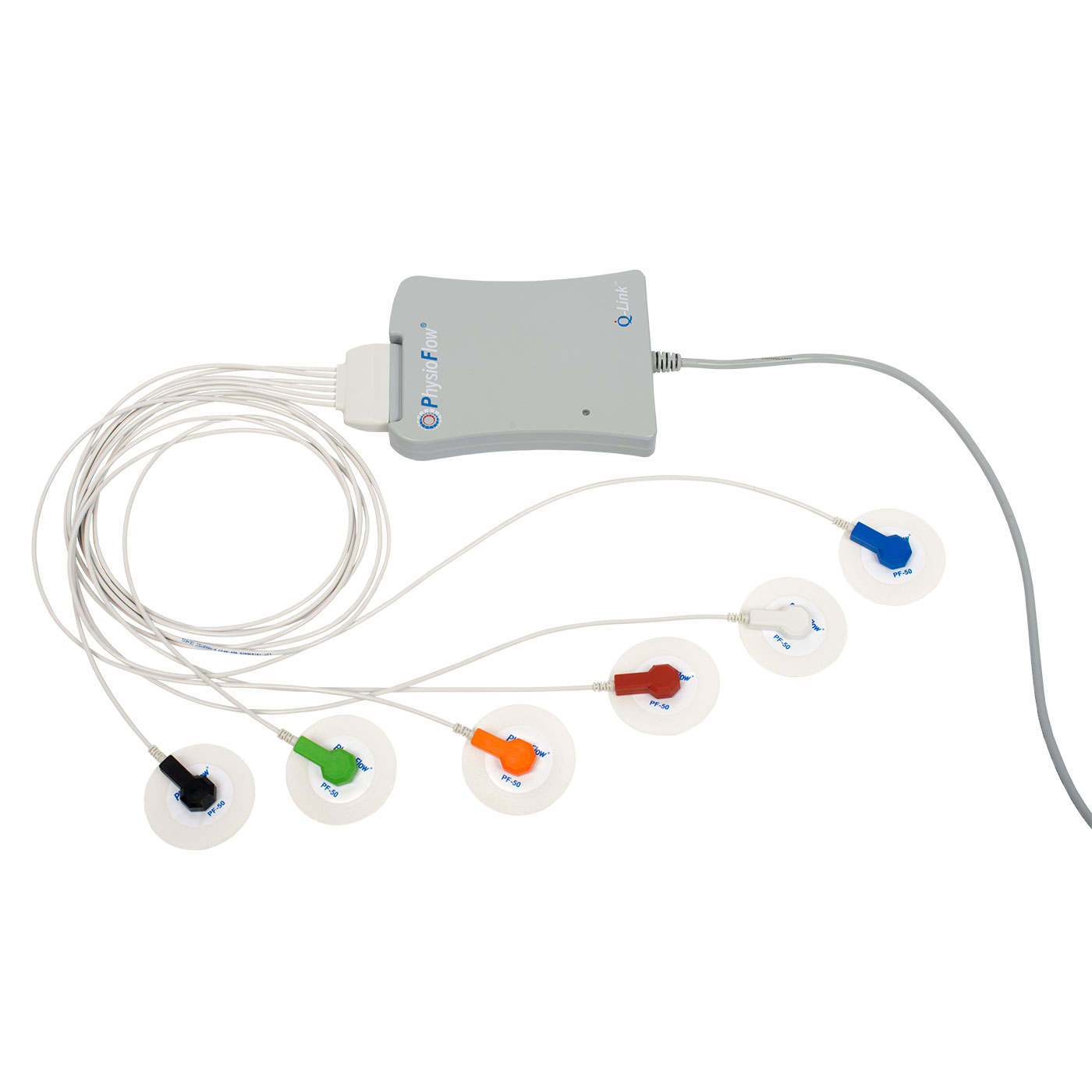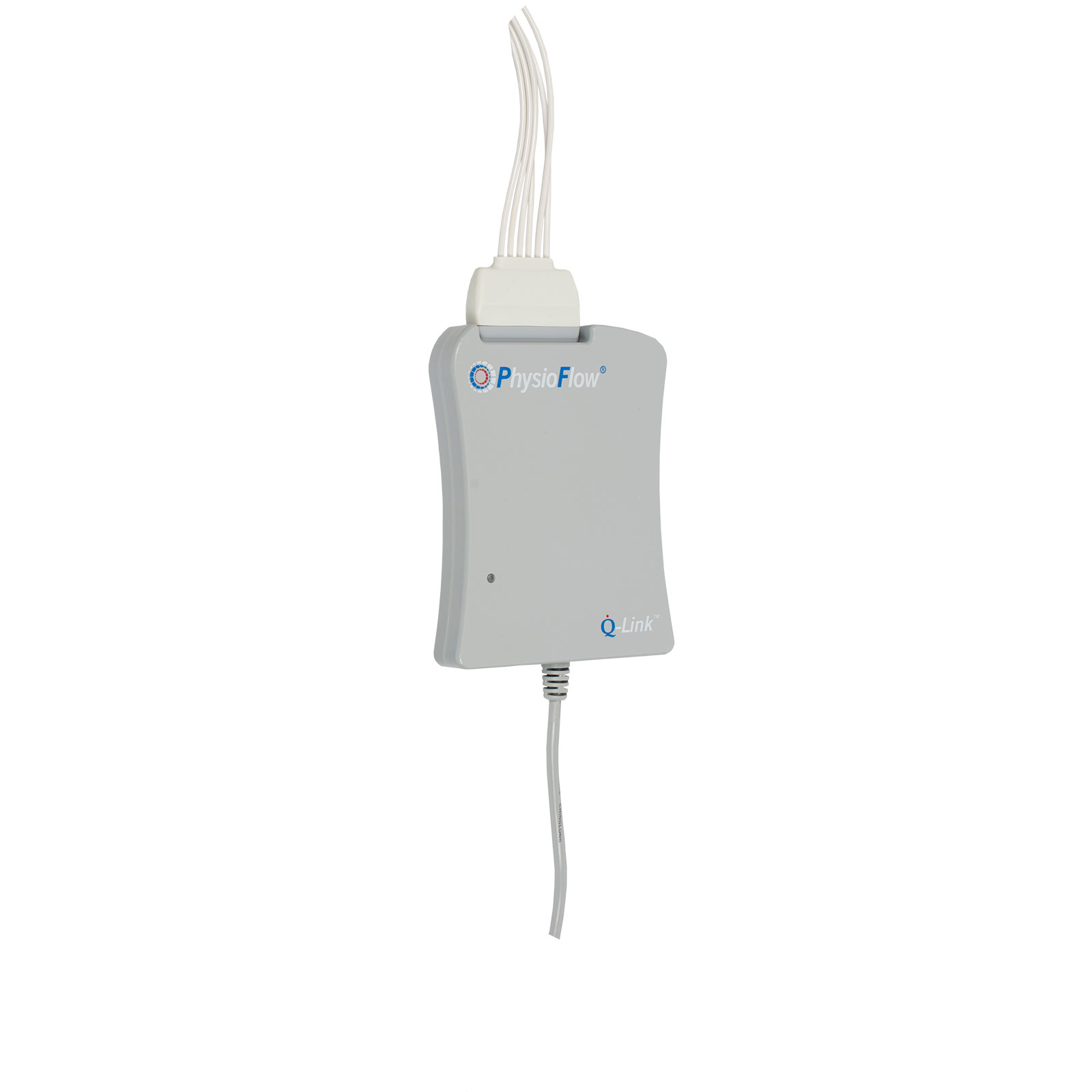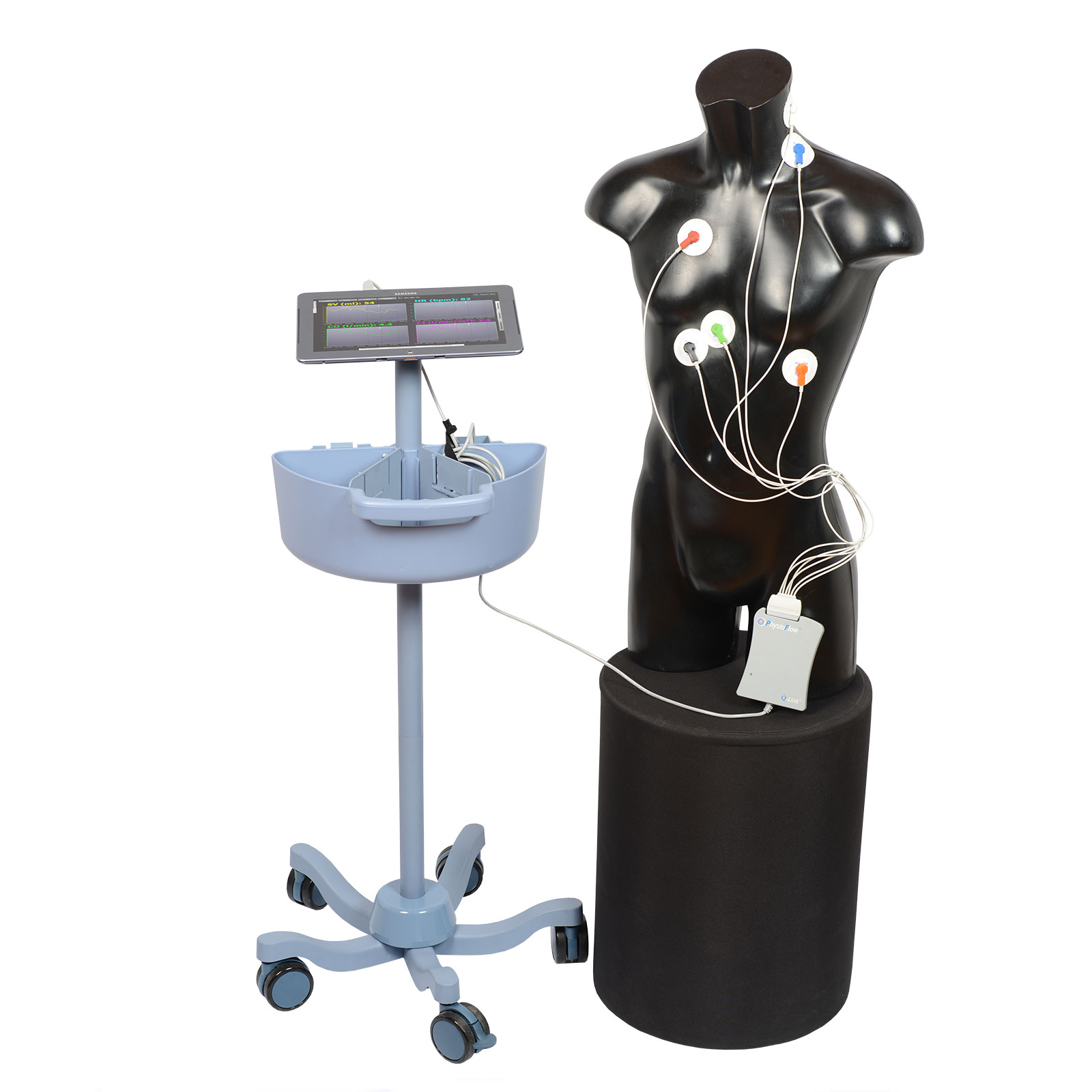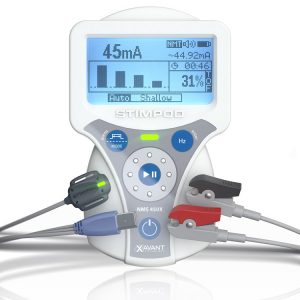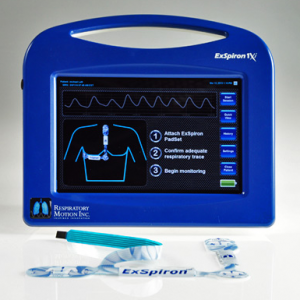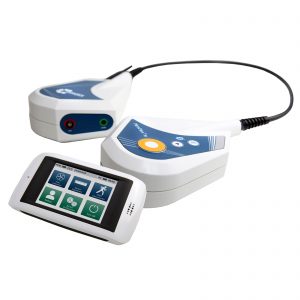Description
Signal Morphology-based Impedance Cardiography (SM-ICG TM)
A new era in noninvasive Cardiac Output monitoring;
PhysioFlow® employs a patented, SM-ICGTM approach that overcomes the limitations of conventional ICG approaches, freeing noninvasive hemodynamic measurements from dependence upon determining Z0 (baseline chest impedance). Simply prep patient and attach six pre-gelled electrodes, initiate a 30-beat calibration cycle to begin continuous hemodynamic data collection and trending in less than 5-minutes.
PhysioFlow® continuously presents these vital signs: Heart Rate, Stroke Volume, Ejection Fraction (Estimate), Cardiac Output/Index, Contractility Index and Early Diastolic Filling Ratio, and also continuously displays the 3-waveforms shown below. Systemic Vascular Resistance and Left Cardiac Work are also computed.
Obtain accurate & continuous-noninvasive, hemodynamic data in PhysioFlow® Signal Morphology-based Impedance Cardiography (SM-ICGTM) technology succeeds on patients in motion because its patented algorithm is more tolerant of motion artifacts. While no ICG technology is yet to work in the presence of severe motion or during tremor/seizures, with proper electrode application and cable stabilization, PhysioFlow® SM-ICGTM is superior to conventional ICG technologies for such challenging patients.
PhysioFlow® Parameters
- Stroke Volume/Index/Stroke Volume Variation Heart Rate/Resp. Rate (New!)
- Cardiac Output/Cardiac Index Contractility Index
- Early Diastolic Filling Ratio (Preload Index)
- Systemic Vascular Resistance/Index (Afterload)
- Left Cardiac Work Index (surrogate for MVO2)
- Ventricular Ejection Time
- Ejection Fraction (est.)
- End Diastolic Volume (est.)
- NEW! Aortic (Vascular) Stiffness and Distensibility
PhysioFlow® Q-LinkTM : The missing link in your diagnosis
PhysioFlow® Q-LinkTM is connected to a computer via a USB port that provides communication and power. Its small size, easy set-up and user-friendly features make this a new, cutting edge technology in the world of hemodynamically guided diagnosis and therapy. Based on the hightech wireless EnduroTM, PhysioFlow® has been further developed to reduce costs and enhance user friendliness. The result is PhysioFlow® Q-LinkTM: all the performance of PhysioFlow® EnduroTM without the batteries and with a computer connection via a simple USB port.
PhysioFlow® — Clinical Studies
A complete bibliography of more than 110 clinical studies manuscripts, posters in in Critical Care, Cardiology, Internal Medecine, Pulmonology, Exercise Physiology, Anesthesiology and more have been conducted with PhysioFlow® technology. Clinical studies cited above were done exclusively with PhysioFlow® devices using its unique Signal Morphology Impedance Cardiography (SM-ICGTM) approach. The results achieved and reported cannot be duplicated by conventional ICG devices that do not employ the patented PhysioFlow® SM-ICGTM technology.

